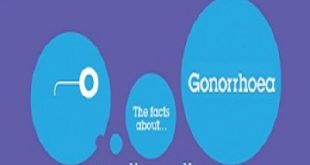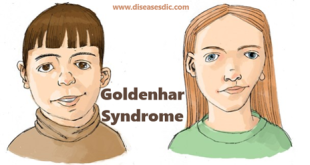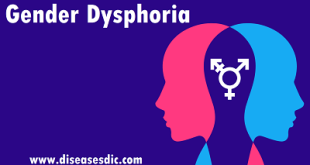Overview
Geographic tongue is a benign condition characterized by inflammation of the tongue (glossitis) that appears in a map-like (geographic) pattern. The normal tongue is covered by a layer of small bumps known as papillae. In affected individuals, certain areas of the tongue are missing these bumps. These affected areas usually appear as smooth, red or pink colored, degenerated (atrophic) patches. It tends to come and go it usually heals without treatment, but will recur again usually affecting a different area of the tongue. Most cases are not associated with any symptoms (asymptomatic) and the condition usually goes away without treatment. Geographic tongue is not associated with any long-term health complications in healthy individuals. The exact cause is unknown.
Epidemiology
Geographic tongue usually begins in childhood and has an overall global prevalence of approximately 1% to 2.5% of the population. The prevalence in the paediatric population ranges from 0.37% to 14.3%. The greatest prevalence occurs in the age group of 20 to 29 years of age at about 39.4%. It has a slightly greater predilection for women than men.
Pathophysiology of Geographic Tongue
The pathogenesis of geographic tongue remains unknown, but several theories have been proposed. Some studies suggest a link between geographic tongue and conditions like asthma, eczema, hay fever, and allergic rhinitis, as well as higher levels of immunoglobulin E. There is also a possible association between geographic tongue and allergies to drugs, food, or other substances. Some experts believe it may be an oral manifestation of psoriasis, as they share clinical, histopathological, and immunohistochemical similarities.
Hormones, including those involved in diabetes and hormonal fluctuations from oral contraceptive use, have been implicated in the development of geographic tongue. Deficiencies in vitamins D, B6, B12, folic acid, iron, and zinc have also been suggested as playing a role. Surprisingly, tobacco use seems to have a protective effect against geographic tongue, possibly due to its impact on keratinization and the regulation of certain inflammatory markers. It’s important to note that while these associations have been observed, the exact cause and mechanisms of geographic tongue are still not fully understood.
Types of Geographic Tongue
It is also known as benign migratory glossitis, generally does not have different types. However, it can present in various ways and exhibit different patterns on the surface of the tongue. Here are the common presentations or variations of geographic tongue:
- Map-like patterns: The most common type, with irregular patchy areas resembling a map on the tongue’s surface. These patches have a white or yellowish border.
- Red or smooth patches: Some cases may have redder or smoother patches on the tongue compared to the surrounding healthy tissue. These patches may not have distinct borders like the map-like pattern.
- Fissures or grooves: Geographic tongue can also include deep cracks or grooves on the tongue’s surface, giving it a wrinkled or cracked appearance.
Remember, these variations are not separate types but different ways the condition can manifest.
Geographic Tongue
Symptoms of Geographic Tongue
The signs are uneven red patches. They’re usually on your tongue but can also be on your gums, on your cheeks, on the roof of your mouth, or under your tongue. These patches may:
- Have a white or light-colored border
- Vary in size, shape, and color
- Start in one area and then move to another
- Not have the small bumps (papillae) that usually cover your tongue
You may not know that you have geographic tongue until your dentist or doctor spots it during an oral exam.
About 1 in 10 people with geographic tongue have mild discomfort or a burning or painful feeling. This is often because of things like:
- Hot, spicy, or acidic foods
- Cigarette smoke
- Toothpaste
Causes of Geographic Tongue
The exact cause tongue isn’t known. However, there are many theories associated with the disorder.
Many people with the condition say that it appears during times of stress. It also seems to run in families, implying there’s a possible genetic or environmental cause. One study exploring the possible connection with psoriasis did identify a possible genetic link. Specifically, people with geographic tongue may have a variant on a protein coding gene known as interleukin-1 beta (IL-1B).
In some cases, certain habits such as teeth grinding have been linked to the development of geographic tongue. Additionally, people who have grooves along the surface of the tongue, a condition known as fissured tongue, may be more likely to develop geographic tongue.
Other potential causes include:
- Diet-related causes (food sensitivities and nutrient deficiencies)
- Allergies (metals and environmental material)
- Hormone-related causes (use of oral contraceptives)
- Dermatologic conditions (psoriasis and eczema)
- Autoimmune disorders and other inflammatory conditions
- Chronic diseases (diabetes)
- Hereditary disorders (chronic granulomatous disease, a genetic disorder that causes abnormal white blood cells)
Risk factors
The National Center for Advancing Translational Sciences notes that the cause is unknown. This condition may be linked to psoriasis and lichen planus, though the connection is not well understood.
Doctors estimate that 3% of people suffer from geographic tongue, according to the Cleveland Clinic. People of every age, gender, and ethnicity are susceptible.
Geographic tongue often co-occurs in those with:
- Family history of the condition
- Stress
- Fissured tongue
- Reactive arthritis (also known as Reiter’s syndrome)
- Psoriasis
- Hormonal volatility
- Vitamin shortages
- Diabetes, especially type 1
- Allergies or eczema
It can be challenging to find red patches on your tongue. Find comfort in the fact that dental and medical professionals are ready to help diagnose your problem. If you do experience geographic tongue, remember that it’s benign, requires no treatment, and doesn’t lead to other health problems. You’re now prepared to care for your geographic tongue by avoiding spicy foods and focusing on reducing your anxiety.
What are the complications of geographic tongue?
It is a harmless condition where the tongue develops map-like patterns. While it’s not usually a big problem, it can sometimes cause complications or discomfort for some people. Here are a few things that can happen:
- Pain or discomfort: Sometimes, it can make your tongue feel a bit sore or uncomfortable. This might happen when you eat spicy or acidic foods or when your tongue touches certain things. The pain usually goes away on its own without any treatment.
- Sensitivity to certain things: Some people with geographic tongue may find that their tongue becomes more sensitive to things like hot or cold temperatures, certain foods, or even toothpaste. This sensitivity can be bothersome, but it typically goes away without treatment.
- Increased risk of other mouth problems: People with geographic tongue might be more likely to get other mouth problems like tongue inflammation (glossitis), oral thrush (a fungal infection), or recurring canker sores. These problems are usually not serious and can be treated.
- Feeling self-conscious: Some people may feel embarrassed or worried about how their tongue looks. However, this is a personal feeling, and not everyone experiences it.
It’s important to know that these complications are not very common, and most people with geographic tongue don’t have any major issues. If you have any concerns about your tongue or your oral health, it’s best to see a healthcare professional or a dentist who can give you proper advice and help.
Diagnosis
Diagnosing geographic tongue is usually based on how it looks and the symptoms you have. Here’s what might happen during the diagnosis:
Looking at your tongue: A dentist or healthcare professional will examine your tongue closely to see if it has the characteristic map-like patterns of geographic tongue. They will also check the rest of your mouth to make sure there aren’t any other problems causing similar symptoms.
Asking about your medical history: The dentist or healthcare professional may ask you questions about your medical history, like how long you’ve had the symptoms, if anything makes them better or worse, and if you have any other health conditions. This helps them confirm the diagnosis and rule out other possible causes.
Usually, no additional tests or procedures are needed to diagnose geographic tongue because it can be identified just by looking at your tongue. But if the dentist or healthcare professional suspects another problem or wants to be sure, they might recommend more tests or refer you to a specialist.
Treatment for Geographic Tongue
Treatment for geographic tongue is usually not necessary as the condition often resolves on its own without intervention. However, if you’re experiencing discomfort or complications, here are some options:
Pain relief: You can take over-the-counter pain relievers like acetaminophen or ibuprofen to help with any pain or discomfort. Just make sure to follow the instructions on the package.
Avoid irritants: Stay away from things that can worsen your symptoms or irritate your tongue, such as spicy or acidic foods, tobacco, or alcohol. Identifying and avoiding these triggers can help reduce discomfort.
Good oral hygiene: Maintain proper oral hygiene by regularly brushing your teeth and gently cleaning your tongue. This can help prevent additional irritation and minimize complications. You can use a soft-bristled toothbrush and a non-alcoholic mouthwash.
Topical treatments: In some cases, your healthcare provider may recommend medicated mouth rinses, gels, or ointments that can provide relief or reduce inflammation. These products are applied directly to the affected areas as instructed.
Corticosteroids: In rare instances when symptoms are severe or persistent, your healthcare provider may prescribe corticosteroids in the form of mouth rinses or topical creams. These medications help reduce inflammation and provide relief. They are used for a short period and under medical supervision.
Remember to consult with your healthcare provider or dentist if you have concerns about your geographic tongue or if the symptoms are causing significant discomfort. They can assess your situation and provide appropriate guidance or treatments tailored to your needs.
Prevention
Here are some simple points to help prevent complications associated with geographic tongue:
- Brush your teeth and tongue twice a day using a soft toothbrush and fluoride toothpaste.
- Be mindful of any foods or drinks that seem to worsen your symptoms, and try to avoid or limit them.
- Reduce or avoid tobacco and excessive alcohol consumption, as they can irritate the tongue and increase the risk of oral health problems.
- Maintain a balanced diet with plenty of fruits, vegetables, whole grains, lean proteins, and dairy products to support overall oral health.
- Schedule regular dental check-ups to monitor your oral health and receive guidance or treatment as needed.
Remember, while these tips promote good oral health, there is no guaranteed way to prevent geographic tongue as its exact cause is not known.
 Diseases Treatments Dictionary This is complete solution to read all diseases treatments Which covers Prevention, Causes, Symptoms, Medical Terms, Drugs, Prescription, Natural Remedies with cures and Treatments. Most of the common diseases were listed in names, split with categories.
Diseases Treatments Dictionary This is complete solution to read all diseases treatments Which covers Prevention, Causes, Symptoms, Medical Terms, Drugs, Prescription, Natural Remedies with cures and Treatments. Most of the common diseases were listed in names, split with categories.







